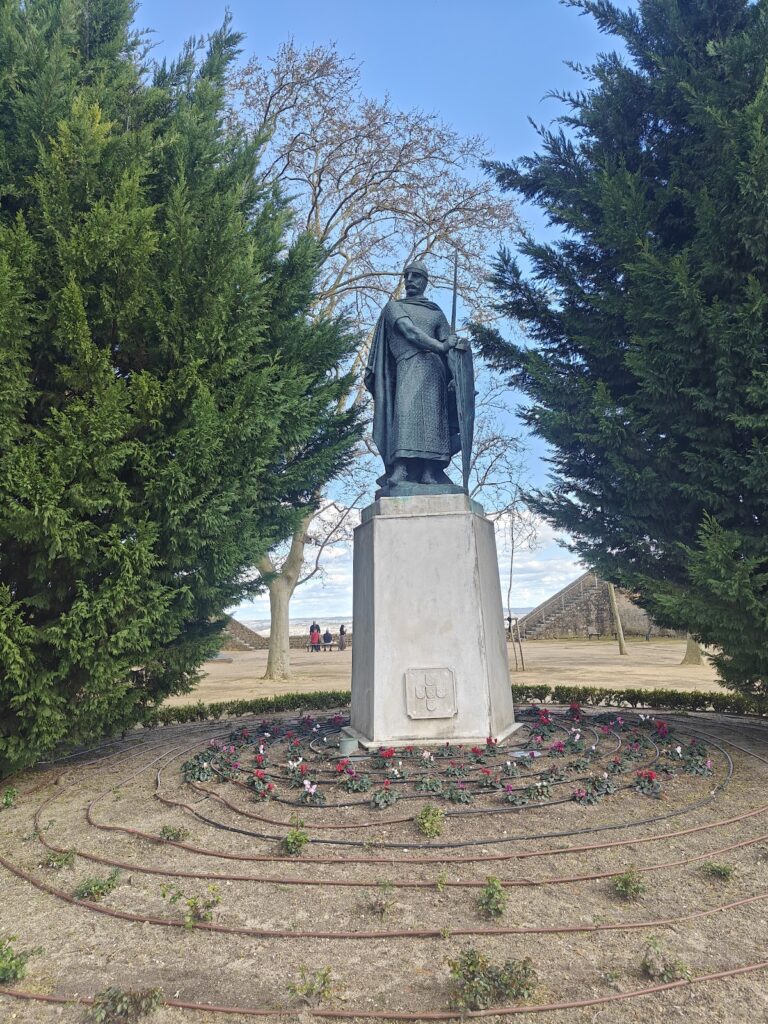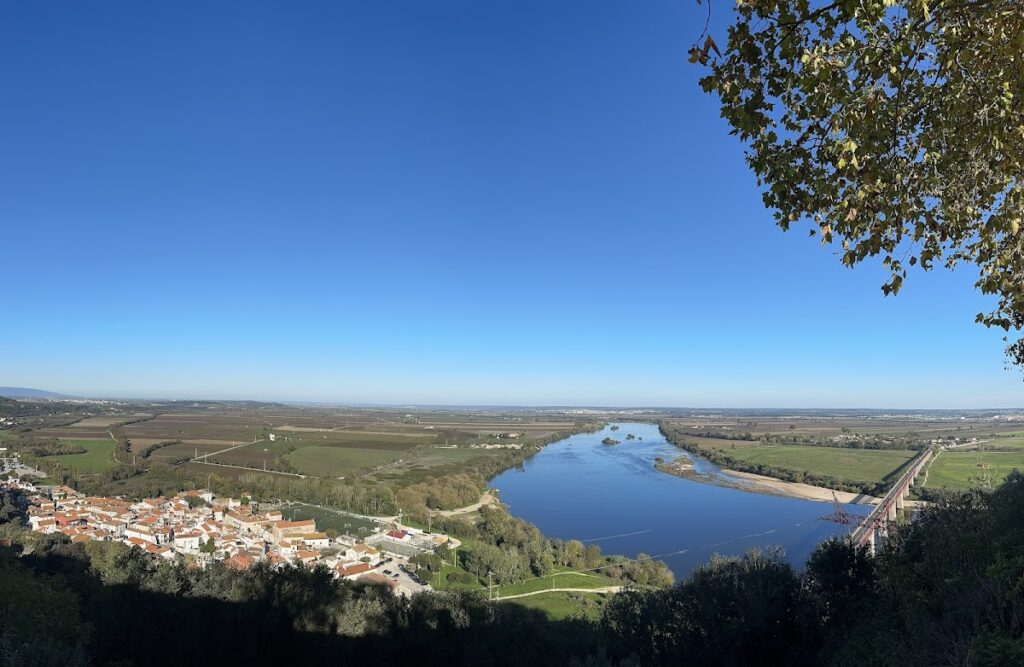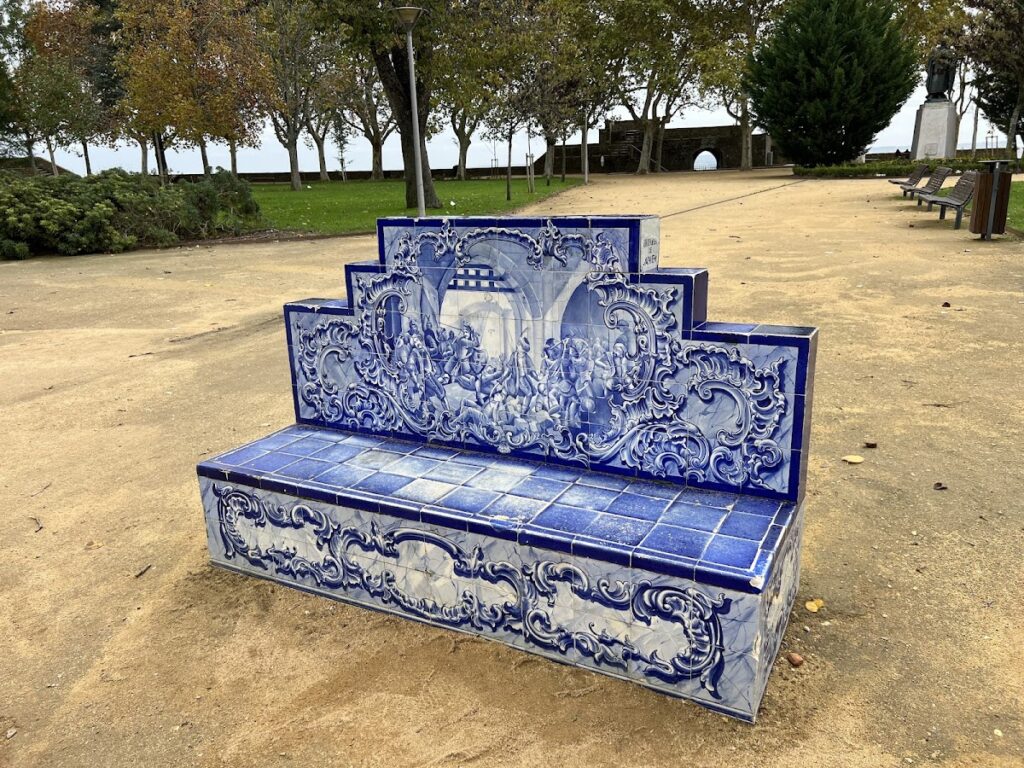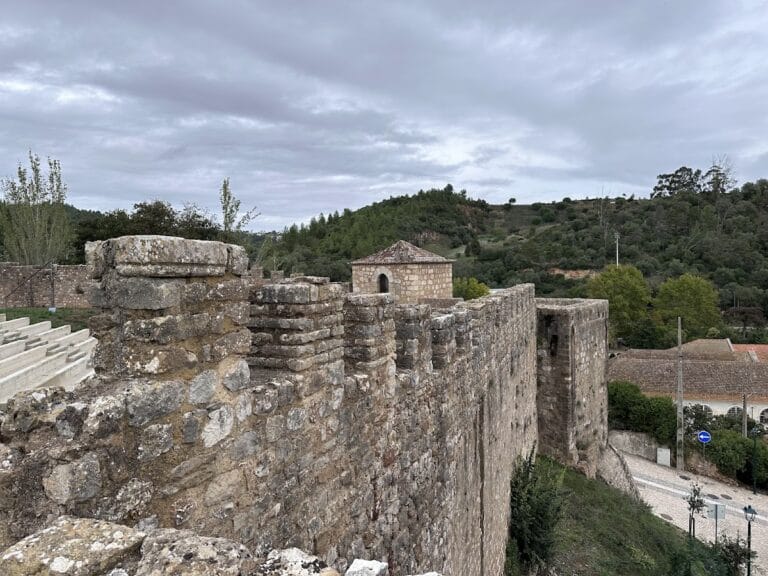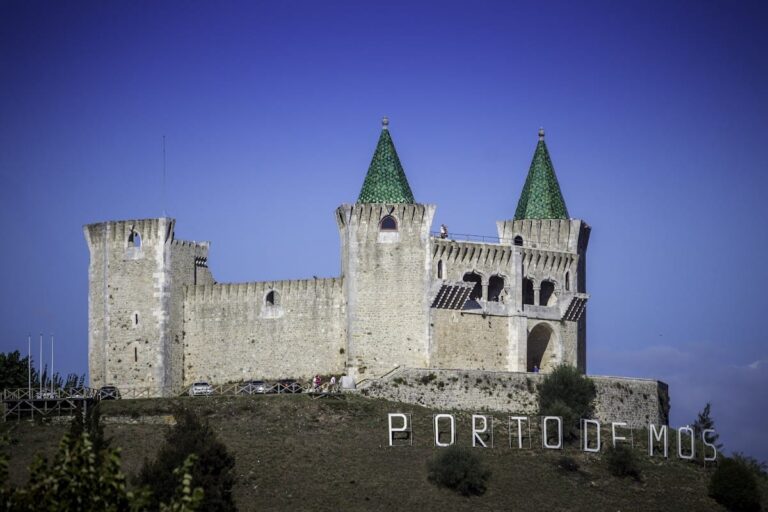Castle of Santarém: A Historic Fortress in Portugal
Visitor Information
Google Rating: 4.5
Popularity: Low
Google Maps: View on Google Maps
Country: Portugal
Civilization: Unclassified
Remains: Military
History
The Castle of Santarém is located in the municipality of Santarém, Portugal. Its origins trace back to an ancient hilltop settlement, initially established as a fortified site during prehistoric times.
The earliest known occupation of this location dates to around the 8th century BCE, when a fortress likely stood there, marking the emergence of an early community. Later, in 138 BCE, the Romans took control and named it “Scalabi Castro” or “Escálabis,” developing it into an important commercial and administrative hub along the Tagus River. Under Roman rule, the settlement gained a permanent military presence following Julius Caesar’s conquest around 90 BCE.
After the decline of Roman authority, the site passed through the hands of several peoples. In 460 CE, it was granted to a figure named Sunerico. The Suebi, a Germanic tribe, took control in 529, followed by the Visigoths in the 7th century. During Visigothic rule, the site was known as “Sancta Irena.” In the early 8th century, Muslim forces occupied the area, renaming it “Chantirein” or “Chantarim,” and they retained its urban character and agricultural productivity.
Throughout the late 11th and early 12th centuries, Santarém frequently changed hands between Christian and Muslim forces amid the efforts of the Christian Reconquest. The castle and town came definitively under Portuguese control on 15 March 1147 when King Afonso Henriques led a surprise night assault capturing it. Following this victory, the king entrusted religious authority over the town to the Knights Templar.
Throughout the late 12th century, the castle faced repeated attacks from the Almohad caliph Abu Ya’qub Yusuf I in 1171 and again in 1181, but Portuguese defenders, supported by allies including Fernando II of León and the infant Sancho, successfully defended it. By 1245, the local governor acknowledged the power of Infante Afonso, who acted as regent of Portugal.
In 1324, the castle became a center of political unrest when it backed Infante Afonso in a revolt against King Dinis. The king died at the castle the following year. Later, King Ferdinand I, who ruled from 1367 to 1383, undertook significant reinforcement and expansion efforts on the fortress, including remodeling the main entrance known as Porta de Santiago with a pointed, or ogival, arch in 1382.
During the succession crisis of 1383-1385, Queen Leonor Teles sought refuge within the castle. Eventually, she handed control over to John I of Castile, who garrisoned Santarém until Portuguese forces reclaimed it following their victory at the Battle of Aljubarrota in 1385. The castle’s military role continued into the late medieval period; however, the death of Infante Afonso near the Tagus River in 1491 coincided with a decline in the town’s administrative importance.
The castle’s defenses were severely damaged by the earthquake of 1531, which affected much of the region. In later centuries, it underwent modernization efforts: King John IV, during his reign from 1640 to 1656, upgraded fortifications to suit the Restoration War’s needs, while King Miguel, ruling from 1828 to 1834, reinforced the castle during the Liberal Wars and used it as a stronghold during the conflict from October 1833 to May 1834.
In December 1868, Santarém was elevated to city status, leading to urban growth that incorporated much of the medieval fortifications into the expanding townscape. Starting in the 1990s, archaeological investigations conducted notably by the University of Lisbon and the Portuguese Institute for Architectural and Archaeological Heritage (IPPAR) brought to light the remains of a Roman temple podium within the castle area, measuring approximately 15 meters on each side and dating from the 1st century BCE.
Remains
The Castle of Santarém is a hilltop fortress characterized by Romanesque and Gothic architectural styles. Its layout originally included the Alcáçova enclosure, serving as the fortified upper settlement, and protective walls surrounding the town. A barbican—an outer defensive wall—further shielded the fortress, while riverside neighborhoods called Ribeira and Alfange also featured their own walls.
The town’s defenses included seven main gates aligned with key access routes. Among these, Porta do Sol, leading toward Alfange, and Porta da Alcáçova survive today in fragmentary form. The most architecturally notable gate, Porta de Santiago, underwent remodeling in 1382 under King Ferdinand. This entrance features pointed arches known as ogival arches and once bore inscriptions of the Portuguese coat of arms beside its inner and outer openings, though these are now illegible.
Additional gates and smaller entrances, or postigos, historically included Porta de Leiria, Porta de São Manços (which also had a postigo), Porta de Alpram or Alporão to Marvila, and Porta de Valada. Other noted smaller gates were Porta de Atamarma leading to Ribeira, Porta das Figueiras, and various postigos such as those of Gonçalo Eanes, Santo Estevão, Vale de Rei, Gonçalo Correia situated between Alcáçova and Marvila near São Martinho Church, and Postigo do Ferragial in the Marvila district.
Towers formed critical elements of the fortifications. The Torre do Bufo was located within the Alcáçova enclosure, complemented by the Torre de Manços and an albarrã tower, a type of detached keep adjacent to the Alcáçova.
Today, visible remains include the enclosure near Porta do Sol, which comprises three turrets crowned with battlements called merlons. These watch over the Alfange valley and incorporate a guardhouse constructed in the 17th century, indicating continued military use during that period. Additional fragments of walls can be observed above Fonte das Figueiras, near the Porta da Traição, as well as near Marvila’s primary school and beside the church of Gracianos. The Torre das Cabaças, also known as Cabaceiro, remains extant as part of the castle’s defensive structures.
Throughout the medieval period, the walls were built as vertical curtain walls topped with solid, prismatic merlons, which are protective stone projections creating battlements. Arrow slits pierced these walls, allowing archers to defend the fortress while minimizing exposure. The walls were strengthened at intervals by both quadrangular and semicircular bastions as well as square towers to improve defense.
Gate openings were constructed using pointed arches, a hallmark of Gothic design that enabled greater structural strength. In the 17th century, fortifications were further enhanced with features in the Mannerist architectural style, including a triangular ravelin—an external outwork designed to protect the main walls. This ravelin’s sloped walls led upward to a guardhouse topped with a dome.
Significantly, archaeological excavations uncovered within the Alcáçova enclosure the podium of a Roman temple dating from the 1st century BCE. This podium measures roughly 15 meters on each side, indicating the presence of a substantial religious structure at the site during Roman times, underscoring the settlement’s long history and layered occupation.

